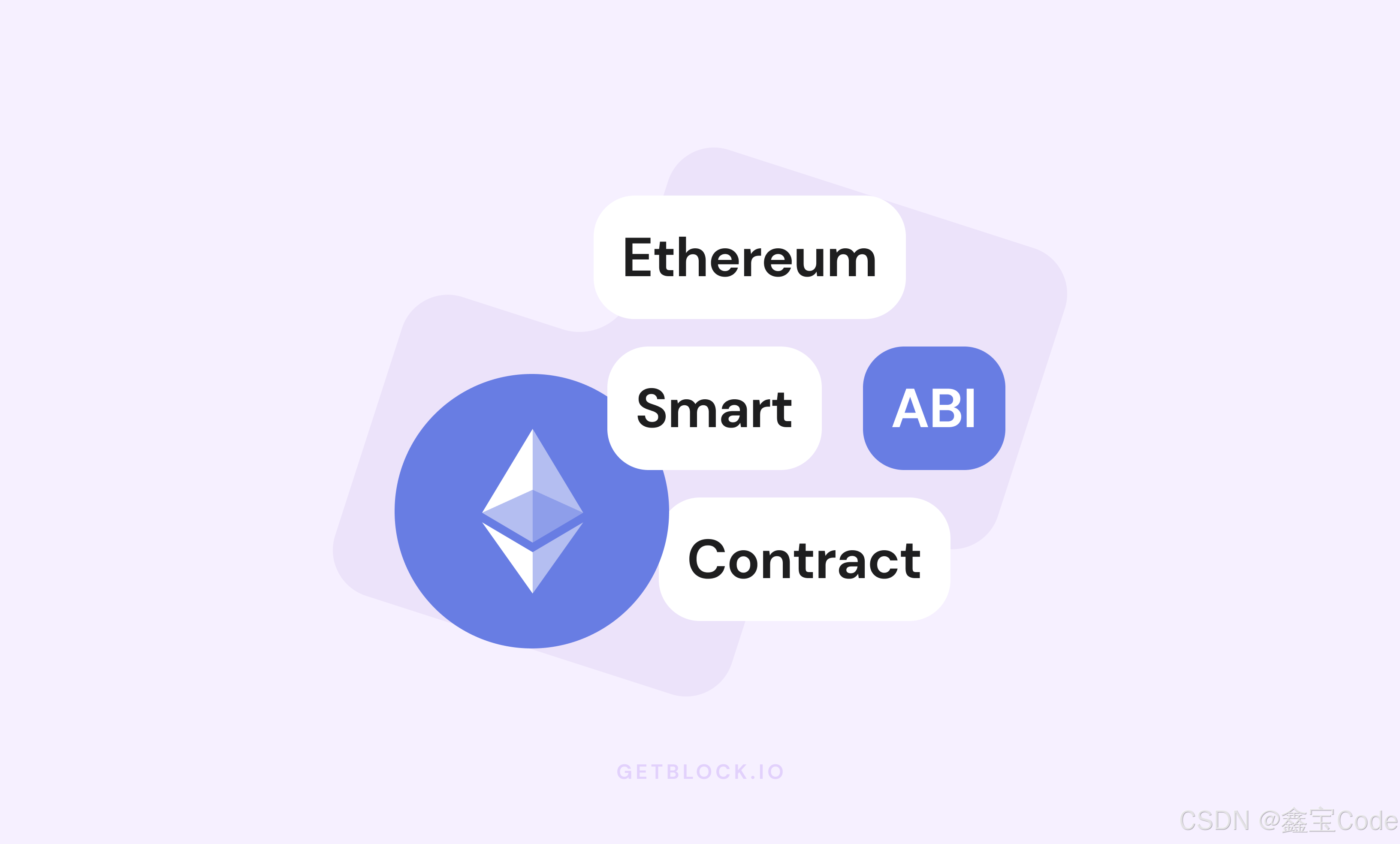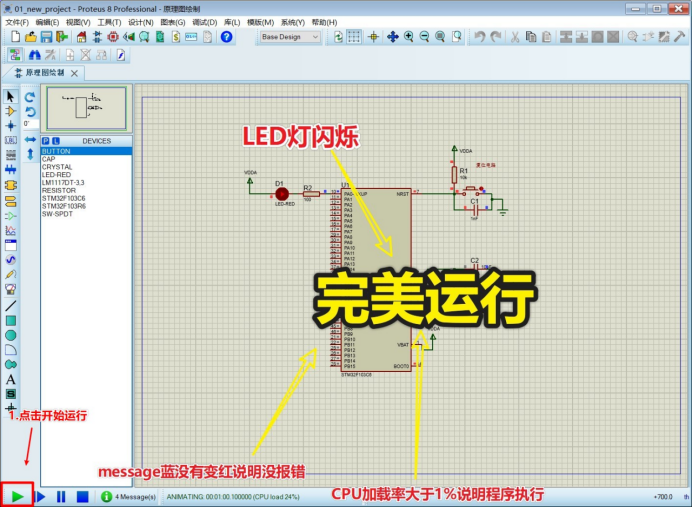

🌈个人主页: 鑫宝Code
🔥热门专栏: 闲话杂谈| 炫酷HTML | JavaScript基础
💫个人格言: "如无必要,勿增实体"

文章目录
- 深入理解智能合约 ABI(应用程序二进制接口)
- 一、ABI 基础概念
- 1.1 为什么需要 ABI?
- 二、ABI 的结构和格式
- 2.1 基本结构示例
- 2.2 主要组成部分
- 三、ABI 编码规则
- 3.1 函数选择器
- 3.2 参数编码
- 四、实际应用示例
- 4.1 合约部署
- 4.2 前端交互
- 五、ABI 的高级特性
- 5.1 函数重载
- 5.2 动态类型处理
- 六、ABI 工具和库
- 6.1 Web3.js 使用示例
- 6.2 Ethers.js 使用示例
- 七、常见问题和解决方案
- 7.1 ABI 解析错误
- 7.2 参数类型不匹配
- 八、最佳实践
- 8.1 ABI 管理
- 8.2 错误处理
- 九、总结
深入理解智能合约 ABI(应用程序二进制接口)
一、ABI 基础概念

ABI(Application Binary Interface)是以太坊智能合约的接口标准,它定义了如何与智能合约进行交互的规范。ABI 是连接智能合约和外部世界的桥梁,使得应用程序能够正确地调用智能合约的函数并解析其返回值。
1.1 为什么需要 ABI?
- 智能合约部署后是二进制形式
- 需要标准化的接口定义
- 确保数据编码的一致性
- 实现跨平台调用
二、ABI 的结构和格式
2.1 基本结构示例
[
{
"type": "function",
"name": "transfer",
"inputs": [
{
"name": "recipient",
"type": "address"
},
{
"name": "amount",
"type": "uint256"
}
],
"outputs": [
{
"name": "",
"type": "bool"
}
],
"stateMutability": "nonpayable"
},
{
"type": "event",
"name": "Transfer",
"inputs": [
{
"name": "from",
"type": "address",
"indexed": true
},
{
"name": "to",
"type": "address",
"indexed": true
},
{
"name": "value",
"type": "uint256",
"indexed": false
}
],
"anonymous": false
}
]
2.2 主要组成部分
- 函数定义
- 事件定义
- 错误定义
- 构造函数定义
三、ABI 编码规则
3.1 函数选择器
// Solidity 合约
contract Example {
function transfer(address recipient, uint256 amount) public returns (bool) {
// 实现逻辑
}
}
// 函数选择器计算
// transfer(address,uint256) => 0xa9059cbb
3.2 参数编码
// Web3.js 中的参数编码示例
const web3 = new Web3();
const encodedParameters = web3.eth.abi.encodeParameters(
['address', 'uint256'],
['0x123...', '1000000000000000000']
);
四、实际应用示例
4.1 合约部署
// 智能合约
contract Token {
mapping(address => uint256) public balances;
function transfer(address to, uint256 amount) public returns (bool) {
require(balances[msg.sender] >= amount, "Insufficient balance");
balances[msg.sender] -= amount;
balances[to] += amount;
return true;
}
}
4.2 前端交互
// 使用 ethers.js 调用合约
const contract = new ethers.Contract(address, abi, provider);
// 调用合约函数
async function transferTokens(to, amount) {
try {
const tx = await contract.transfer(to, amount);
await tx.wait();
console.log('转账成功');
} catch (error) {
console.error('转账失败:', error);
}
}
五、ABI 的高级特性
5.1 函数重载
contract OverloadExample {
// ABI 会区分这两个函数
function getValue(uint256 id) public view returns (uint256) {}
function getValue(address addr) public view returns (uint256) {}
}
5.2 动态类型处理
contract DynamicExample {
// 动态数组参数
function processArray(uint256[] memory data) public {
// 处理逻辑
}
// 动态字符串
function setName(string memory name) public {
// 处理逻辑
}
}
六、ABI 工具和库
6.1 Web3.js 使用示例
// 编码函数调用
const web3 = new Web3();
const encodedCall = web3.eth.abi.encodeFunctionCall({
name: 'transfer',
type: 'function',
inputs: [{
type: 'address',
name: 'recipient'
}, {
type: 'uint256',
name: 'amount'
}]
}, ['0x123...', '1000000000000000000']);
6.2 Ethers.js 使用示例
// 使用 ethers.js 解析事件日志
const interface = new ethers.utils.Interface(abi);
const parsedLog = interface.parseLog(log);
console.log('事件名称:', parsedLog.name);
console.log('事件参数:', parsedLog.args);
七、常见问题和解决方案
7.1 ABI 解析错误
// ABI 验证函数
function validateABI(abi) {
try {
JSON.parse(JSON.stringify(abi));
return true;
} catch (error) {
console.error('ABI 格式无效:', error);
return false;
}
}
7.2 参数类型不匹配
// 参数类型检查
function validateParameter(type, value) {
switch(type) {
case 'address':
return web3.utils.isAddress(value);
case 'uint256':
return !isNaN(value) && value >= 0;
// 其他类型检查
default:
return true;
}
}
八、最佳实践
8.1 ABI 管理
// ABI 存储和版本控制
const contractABIs = {
v1: require('./abis/v1.json'),
v2: require('./abis/v2.json')
};
function getContractABI(version) {
return contractABIs[version] || contractABIs.v1;
}
8.2 错误处理
async function safeContractCall(contract, method, ...args) {
try {
const result = await contract[method](...args);
return { success: true, data: result };
} catch (error) {
console.error(`合约调用失败: ${method}`, error);
return { success: false, error };
}
}
九、总结
ABI 是智能合约开发中不可或缺的组成部分,它的重要性体现在:
- 标准化接口定义
- 确保交互的准确性
- 提供跨平台兼容性
- 支持合约升级和版本控制
关键要点:
- 理解 ABI 的结构和格式
- 掌握编码规则
- 正确处理参数类型
- 做好错误处理
- 遵循最佳实践
随着智能合约技术的发展,ABI 标准也在不断完善。开发者需要持续关注相关更新,以确保开发的应用程序能够稳定可靠地与智能合约进行交互。




















